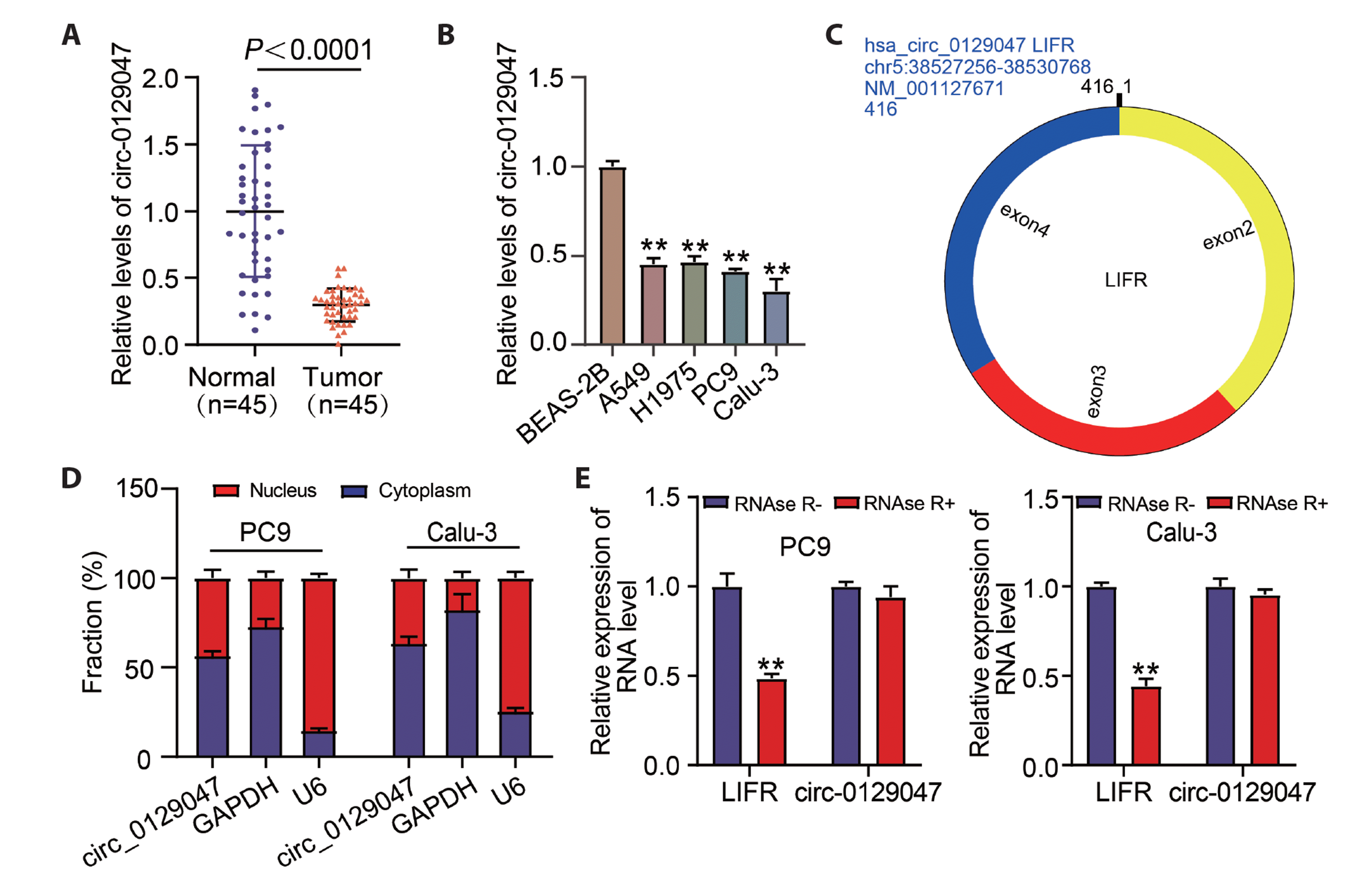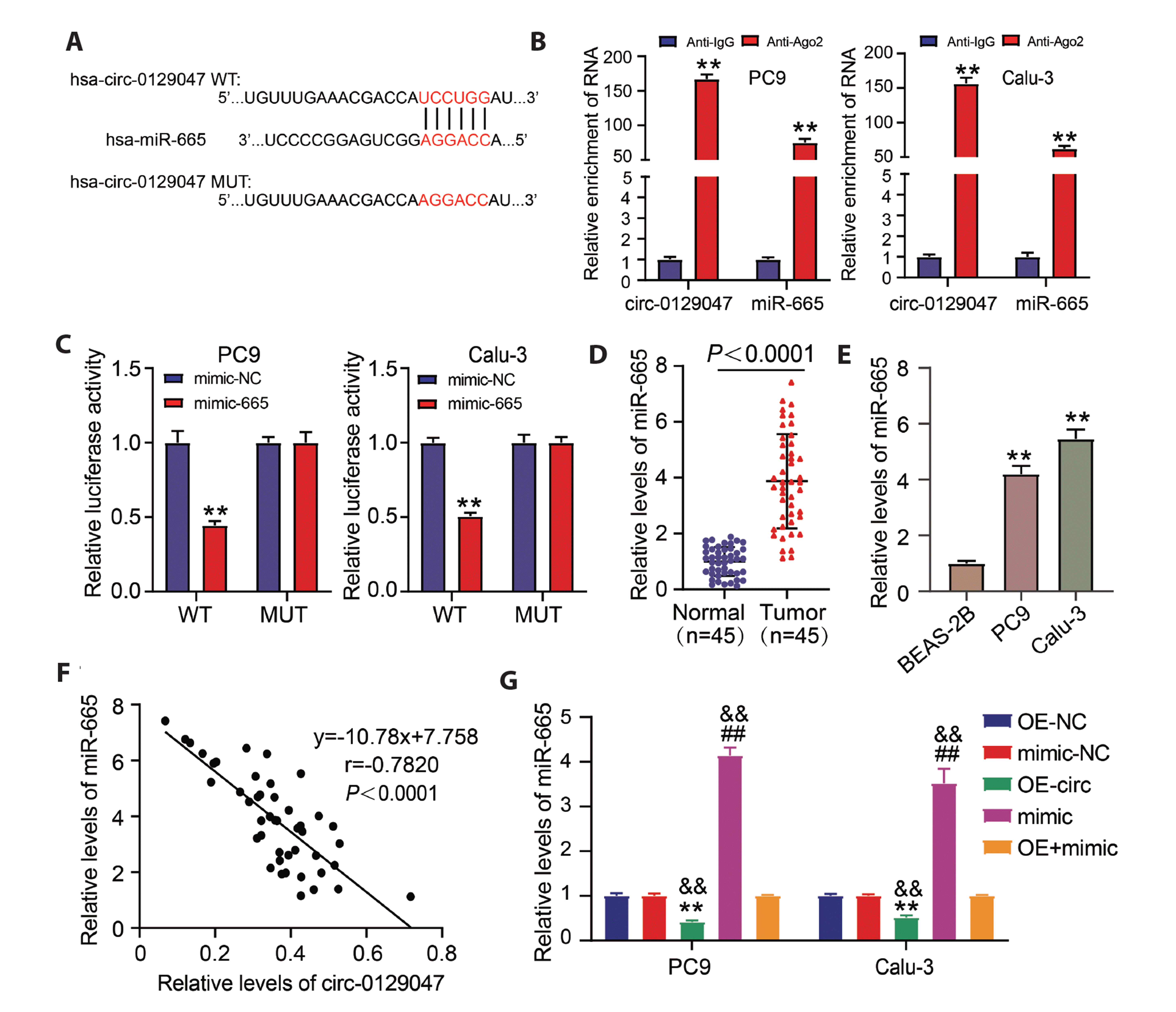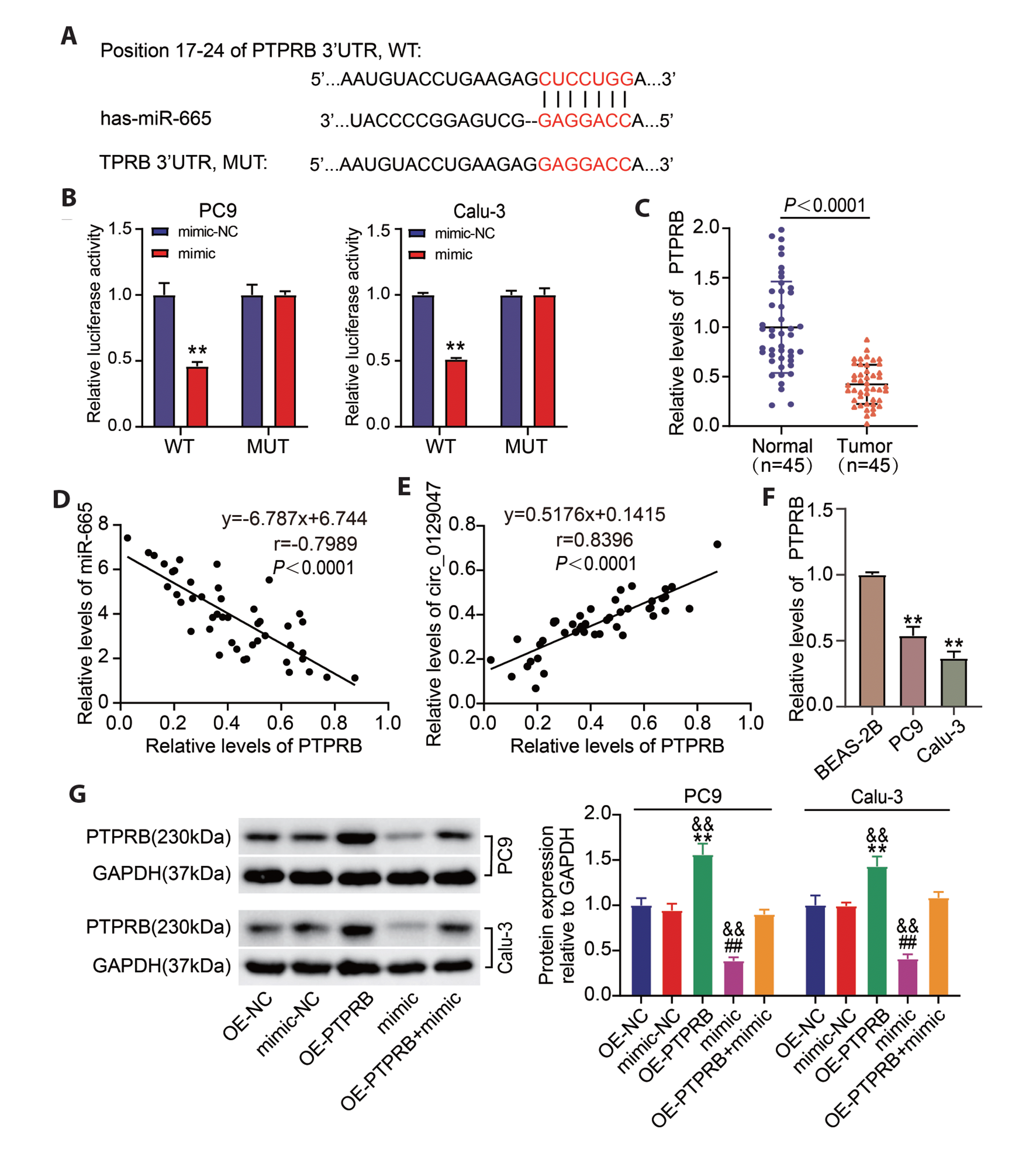9. Dong Y, Qiu T, Xuan Y, Liu A, Sun X, Huang Z, Su W, Du W, Yun T, Wo Y, Navarro A, Jiao W. 2021; circFBXW7 attenuates malignant progression in lung adenocarcinoma by sponging miR-942-5p. Transl Lung Cancer Res. 10:1457–1473. DOI:
10.21037/tlcr-21-230. PMID:
33889522. PMCID:
PMC8044477. PMID:
https://www.scopus.com/inward/record.uri?partnerID=HzOxMe3b&scp=85103568608&origin=inward.

13. Zhao XG, Hu JY, Tang J, Yi W, Zhang MY, Deng R, Mai SJ, Weng NQ, Wang RQ, Liu J, Zhang HZ, He JH, Wang HY. 2019; miR-665 expression predicts poor survival and promotes tumor metastasis by targeting NR4A3 in breast cancer. Cell Death Dis. 10:479. DOI:
10.1038/s41419-019-1705-z. PMID:
31209222. PMCID:
PMC6579763. PMID:
https://www.scopus.com/inward/record.uri?partnerID=HzOxMe3b&scp=85067366037&origin=inward.

14. Wang W, Ying Y, Xie H, Li J, Ma X, He L, Xu M, Chen S, Shen H, Zheng X, Liu B, Wang X, Xie L. 2021; miR-665 inhibits epithelial-to-mesenchymal transition in bladder cancer via the SMAD3/SNAIL axis. Cell Cycle. 20:1242–1252. DOI:
10.1080/15384101.2021.1929677. PMID:
34196584. PMCID:
PMC8331018. PMID:
https://www.scopus.com/inward/record.uri?partnerID=HzOxMe3b&scp=85109331908&origin=inward.

16. Zhou P, Xiong T, Yao L, Yuan J. 2020; MicroRNA-665 promotes the proliferation of ovarian cancer cells by targeting SRCIN1. Exp Ther Med. 19:1112–1120. DOI:
10.3892/etm.2019.8293. PMID:
32010277. PMCID:
PMC6966142.

18. Huang C, Yue W, Li L, Li S, Gao C, Si L, Qi L, Cheng C, Lu M, Chen G, Cui J, Zhao R, Li Y, Tian H. 2021; Circular RNA hsa-circ-000881 suppresses the progression of lung adenocarcinoma
in vitro via a miR-665/PRICKLE2 axis. Ann Transl Med. 9:498. DOI:
10.21037/atm-21-844. PMID:
33850895. PMCID:
PMC8039684.

23. Wang C, Tan S, Liu WR, Lei Q, Qiao W, Wu Y, Liu X, Cheng W, Wei YQ, Peng Y, Li W. 2019; RNA-Seq profiling of circular RNA in human lung adenocarcinoma and squamous cell carcinoma. Mol Cancer. 18:134. DOI:
10.1186/s12943-019-1061-8. PMID:
31484581. PMCID:
PMC6724331. PMID:
2e76a130cbeb43ecb4e7b656b78cc72a. PMID:
https://www.scopus.com/inward/record.uri?partnerID=HzOxMe3b&scp=85071737129&origin=inward.











 PDF
PDF Citation
Citation Print
Print


 XML Download
XML Download